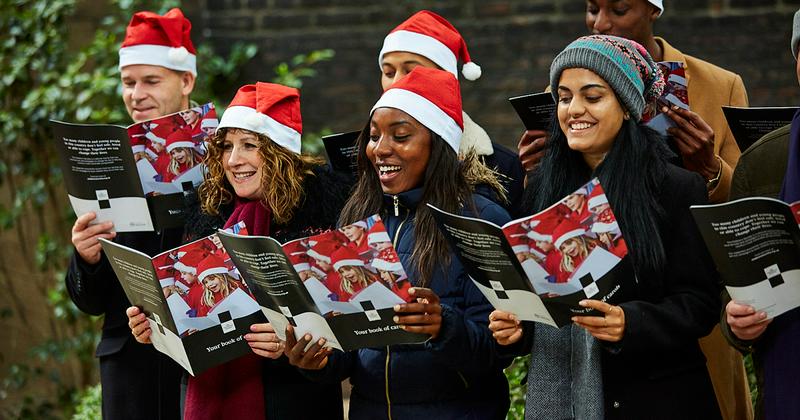From Wassailing To Christmas Caroling
By | November 30, 2019

Every year, TV channels like Hallmark and Lifetime play countless Christmas movies set in Small Town, USA. And, at some point in most of these movies, the main characters will be convinced to go Christmas caroling. All of them will have perfect voices despite the freezing cold (there’s always snow in the movies) and the giant mugs of hot chocolate they consume to keep warm. However, the real-life version is likely much less enjoyable, thus leading one to wonder who came up with the idea in the first place.
The etymology of the word “carol” reveals it to be linked with dance rather than singing. The Old French word “carole” is a kind of dance while similar words like “choraula” in Latin and “choraules” in Greek both refer to a dance accompanied by the flute. Therefore, it makes sense that the earliest carols had no connection with Christmas but were instead the animated beats accompanying traditional dances. These dances were, however, connected with the Yule Festival in which Northern Europeans would celebrate the Winter Solstice through song and dance. Eventually, these early songs would evolve into hymns, no longer accompanied by dance.

The first songs celebrating the birth of Christ were written in Latin around the fourth or fifth century, but they did not become known as Christmas Carols until around the thirteenth century. It was Francis of Assisi, the Roman Catholic saint of animals and the environment, who is believed to have been the first to incorporate the more upbeat Latin hymns into his Christmas service. From there, it spread throughout Europe.

There are a few origin theories regarding the custom of spreading cheer from door to door. Some believe that the carolers began singing door to door because they were forbidden to sing their carols in church. Others link the practice to the feudal system wherein peasants often had to “sing for their supper.” However, the most common theory is that it evolved from a sixteenth-century tradition called wassailing, which involved Christmas but not singing.

The word “wassail” comes from the Old Norse word “ves heill” which means “be well, and in good health.” Wassail was also the name of a thick and hot spiced beverage, the drinking of which was a holiday tradition much like eggnog today. The practice of wassailing involved spreading the good news in exchange for nourishment. While there was no singing involved, this practice is believed to have been the inspiration behind the figgy pudding verse of “We Wish You a Merry Christmas.” However, it wasn’t just Christmas but any holiday which might be an occasion for wassailing.

It wasn’t until the nineteenth century with the increasing commercialization of Christmas, that the idea of Christmas caroling really took off. The upbeat songs were more accepted during the Victorian Era than they had been during the seventeenth century when Oliver Cromwell banned Christmas celebrations in England because he thought the holiday should be a solemn affair. However, these days, despite what Hallmark movies suggest, Christmas caroling is once again on the decline. When Christmas cheer can be spread from the comfort of one’s living room simply by posting on social media or sending a text, there’s just not enough motivation to go traipsing around in the cold.

